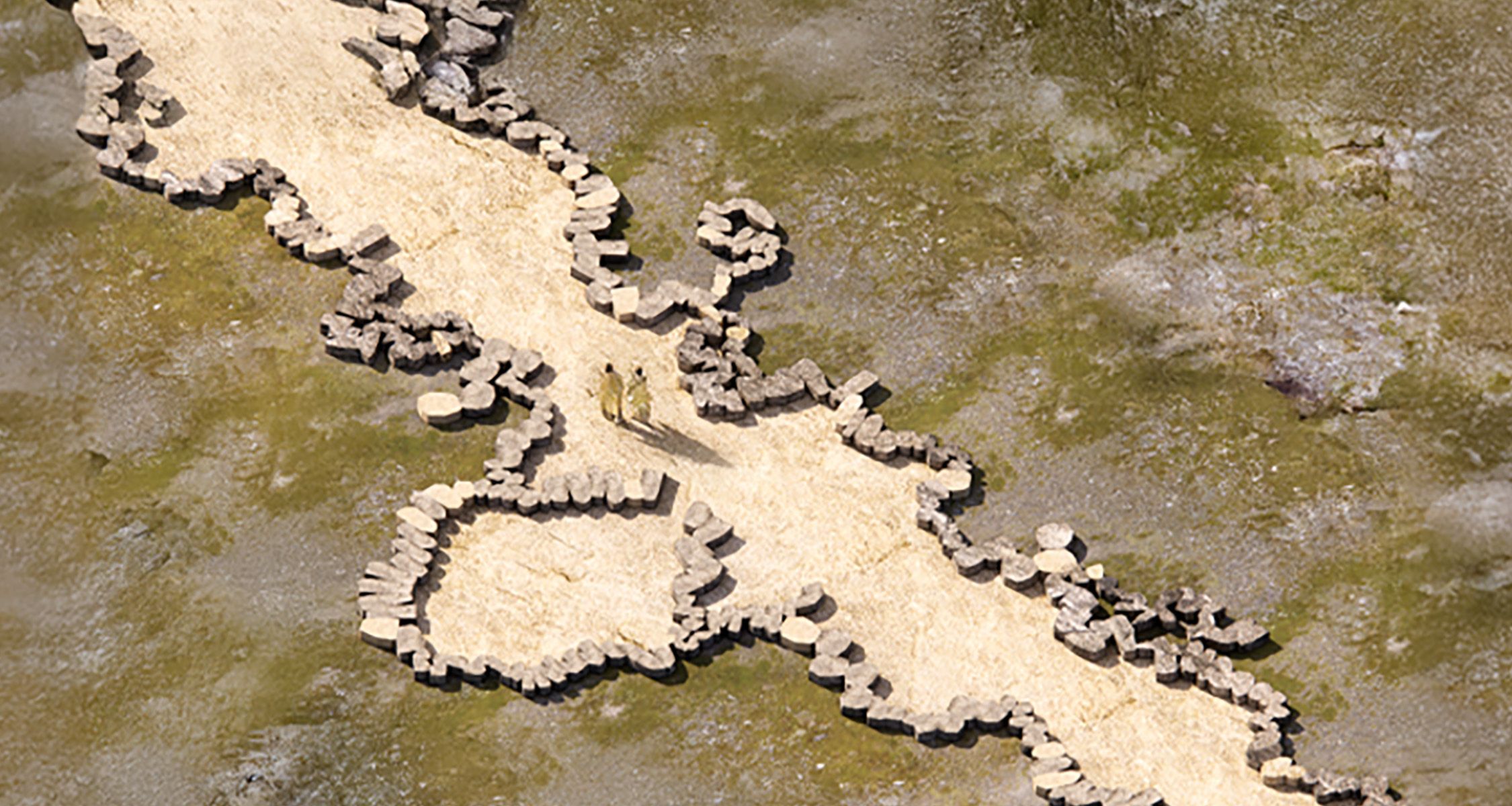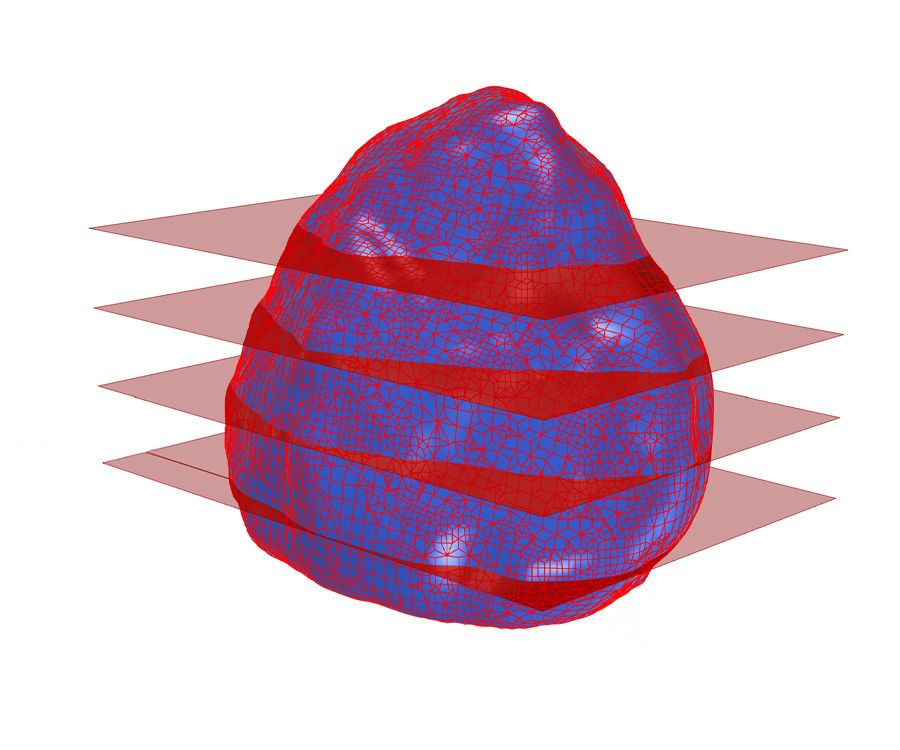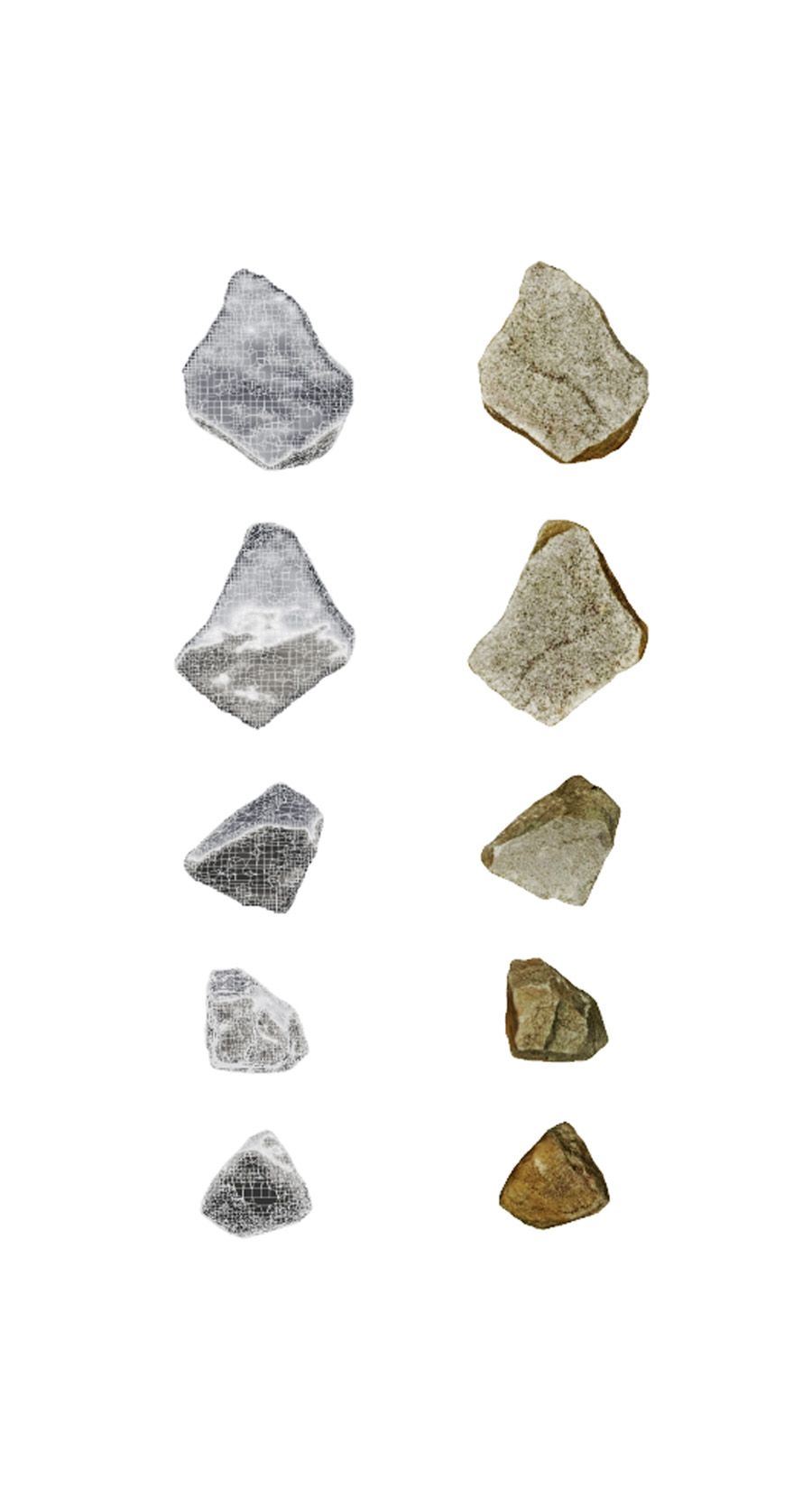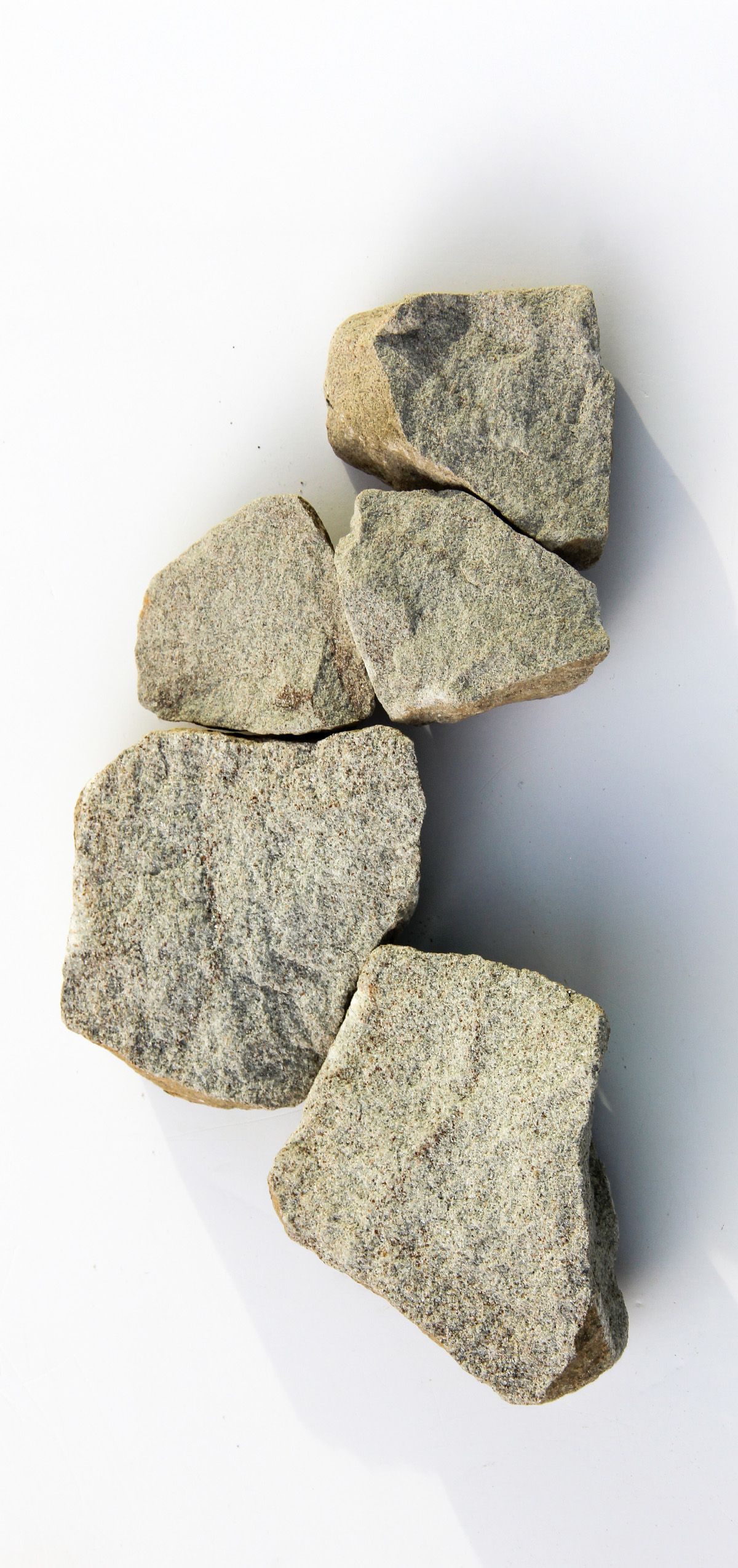Irregular Fit
Assembly Design Tool for Waste Stone

This project explores the potential of transforming non-standard, irregular materials such as rocks, boulders, and waste fragments into a structured architectural language through computational processes. The workflow begins with 3D scanning these artifacts to create a digital inventory of mesh models. Each mesh is processed using a parametric slicing tool, dividing it into adjustable layers that simulate material scale, mechanical properties, or inherent fault lines. These slices are indexed and reoriented to their flattest face for efficient 2D projection. Using the vertices of each slice, irregular footprints are derived and enclosed with convex hull polylines via Graham’s Scan. These polylines are further refined through abstraction and offsetting, balancing fidelity and fit. A computational algorithm with collision detection aligns the second longest edge of one polygon to the longest edge of the preceding, enabling seamless assembly. The 3D meshes are reassembled based on these transformations, forming a cohesive structure. This process reveals a new tectonic language, one that respects the inherent irregularities of found materials while leveraging advanced computational tools. It redefines waste materials as valuable design elements, showcasing their potential to create unique, context-responsive architectural forms.


